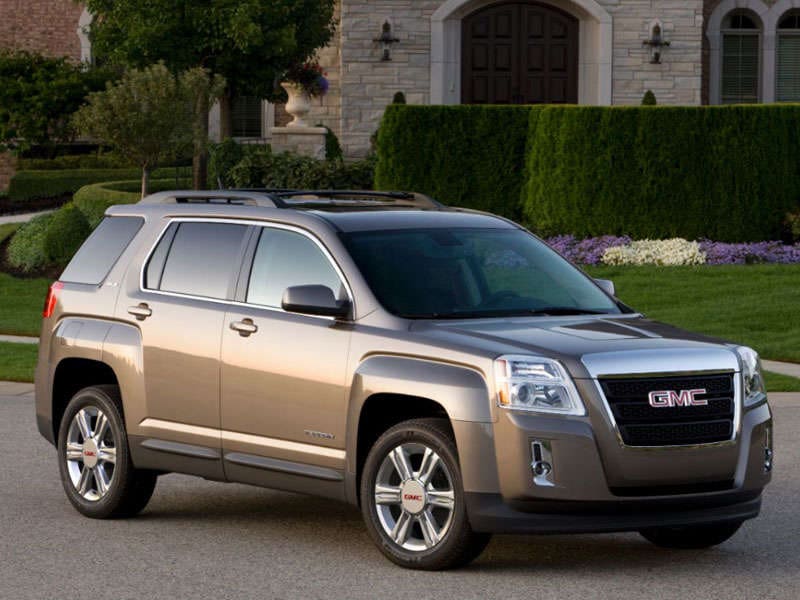Recent Articles
Popular Makes
Body Types
2014 GMC Terrain Crossover SUV Road Test and Review
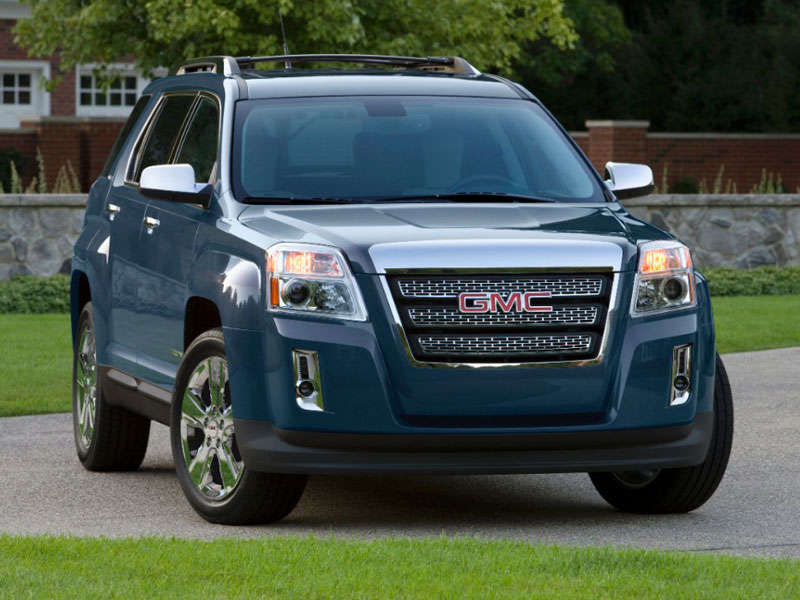
When you think about small crossover SUVs, the name “GMC” likely doesn’t spring to mind, even if the 2014 Terrain has caught your eye out on the road. Most people equate a glittering red GMC badge with a big pickup truck or a huge SUV, which is why the Terrain is wrapped in design that grabs attention. GMC wants people to notice this vehicle. Nevertheless, despite the fact that it is almost impossible to ignore, the GMC Terrain is a relative rarity on American roads when compared to the heavy hitters in the segment, which in my opinion only enhances its appeal.
Introduced for the 2010 model year, and significantly upgraded for 2013, the GMC Terrain carries forward into 2014 with nothing more than new wheel designs and a new paint color. Last year, our own Benjamin Hunting reviewed the ritzy Terrain Denali model, complete with the SUV’s optional 3.6-liter V-6 engine, available all-wheel-drive system, and a price tag north of $40,000. This time around, we sampled the Terrain SLT equipped with the most popular powertrain configuration, the standard 4-cylinder engine and front-wheel drive.
After a week of using the Terrain for family-shuttle duty, it is clear that GMC has something to offer to crossover SUV buyers who are looking for an alternative to the status quo. At the same time, though, there is room for improvement in several areas.
2014 GMC Terrain Crossover SUV Road Test and Review: Models and Prices
When choosing a 2014 GMC Terrain, buyers can select from SLE, SLT, and Denali trim levels. Each comes standard with a 2.4-liter 4-cylinder engine and front-wheel drive. A much more powerful, and slightly thirstier, V-6 engine is optional, as is all-wheel drive.
The standard SLE model is well equipped at $27,390. Upgrade this model with the SLE-2 Package ($1,500) to obtain IntelliLink smartphone integration technology, automatic climate control, a premium sound system, a power driver’s seat, upgraded cloth seats, a leather-wrapped steering wheel, and luggage rails. The SLE-2 Package is also a requirement to access options such as a V-6 engine, larger wheels, a trailering package, a cargo cover, a cargo net, and roof rack crossbars. The extras are not limited to practical items. The SLE-2 model can also be optioned with heated cloth seats, remote engine starting, a power sunroof, a navigation system, and a Safety Package providing a Forward Collision Alert system, a Lane Departure Warning system, and rear parking assist sensors.
Choose the Terrain SLT ($30,440) for leather seats, heated front seats, and remote engine starting. The SLT-2 Package ($3,245) upgrades this version of the Terrain with the Safety Package, a universal garage door opener, a power rear liftgate, a power sunroof, memory for the driver’s settings, additional chrome exterior trim, and 18-inch chrome wheels. Choosing the SLT-2 Package is required to obtain an optional rear-seat entertainment system.
The Terrain Denali ($35,890) gets its own unique styling and wheels, plus a blind spot information system, a rear cross-traffic alert system, an 8-way power front passenger’s seat, and wood trim for the steering wheel, shift knob, and door panels. GMC positions the Terrain Denali as a luxury model, and when equipped with every option it tops out at $40,675.
My test vehicle was the 2014 Terrain with the SLT-2 Package, wearing a sticker price of $33,685 including the $925 destination charge.
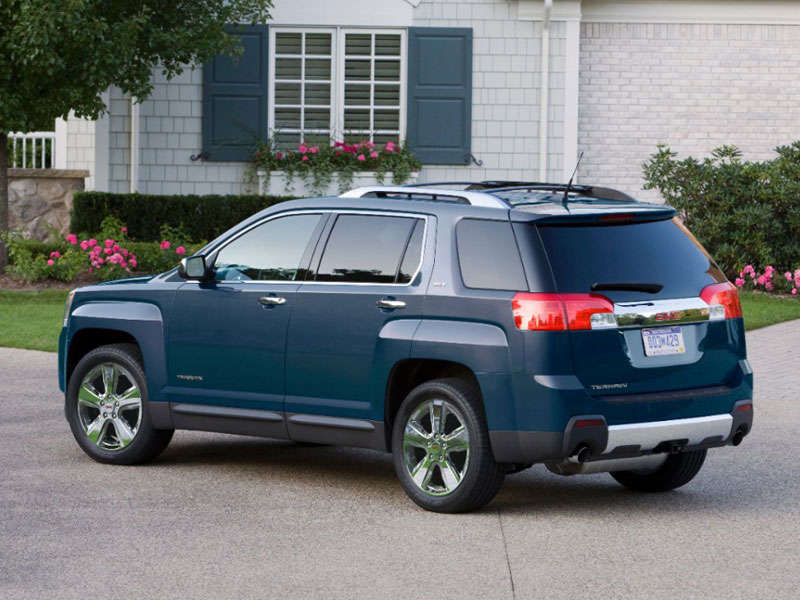
2014 GMC Terrain Crossover SUV Road Test and Review: Design
- New wheel designs
- New Silver Sky Metallic paint
In order to ensure that compact crossover SUV shoppers put the 2014 Terrain on their consideration list, GMC makes it hard to ignore. The boxy and bulging Terrain definitely does not fade into the landscape, what with its massive grille, bold fender flares, shiny chrome trim, and design-by-T-square ethos. Though certain elements of the Terrain’s styling are purposely exaggerated, the overall look is one of rugged individuality, and the SUV conveys an almost architectural appearance totally in keeping with GMC’s “professional grade” marketing approach.
Generally, I find the Terrain’s design attractive, especially the wrap-around rear glass treatment. The SUV definitely needs the available 18-inch or 19-inch wheels to help tone down the fender flares, and the front end reminds me of someone who is engaged in a breath-holding contest, but otherwise this is an undeniably appealing sport-ute.
If the Terrain looks upscale on the outside, the interior could use some improvement in terms of materials and finish. While there’s plenty of silver plastic trim designed to mimic metal, and though many of the hard plastic surfaces are matte-coated to reduce glare, GMC’s attempts at matching interior quality with the sticker price fall short. Even the leather is merely adequate for a vehicle commanding more than $30,000.
Nevertheless, the cabin’s design is appealing, especially for fans of symmetry. My test vehicle’s Jet Black perforated leather featured subtle red contrast stitching to match the interior’s red ambient lighting and red control illumination. The silver trim pieces and chrome accents served well to break the relentless monotony of my test vehicle’s dark interior, and GMC offers the Terrain SLT with Light Titanium/Black or Brownstone/Black two-tone interior colors for people who might prefer a lighter environment.
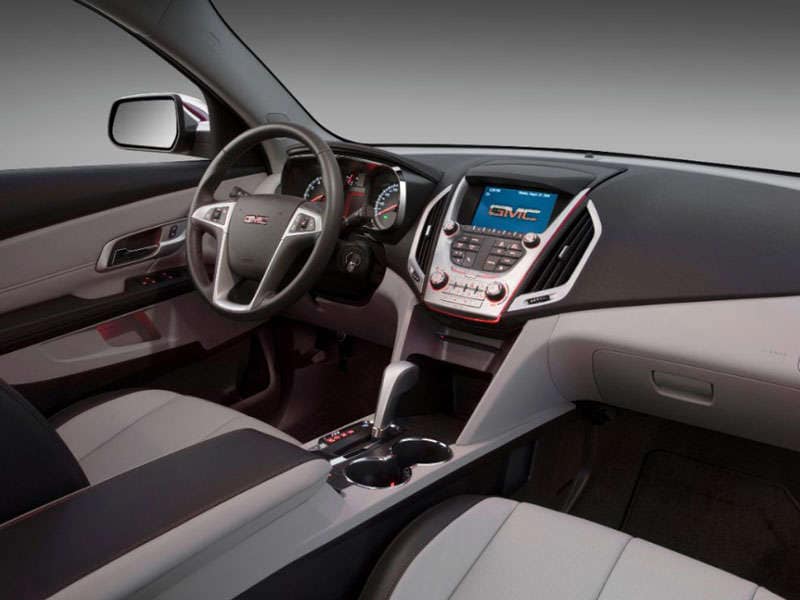
2014 GMC Terrain Crossover SUV Road Test and Review: Comfort and Cargo
- No changes
Thanks to plenty of front seat track travel and an available 8-way power driver’s seat, GMC ensures that a wide variety of people will fit inside the Terrain. I had no trouble finding a perfect driving position behind the tilt/telescopic steering wheel, and the seat cushioning proved firm, supportive, and comfortable after several hours behind the wheel.
The Terrain’s rear seat is equally comfortable, offering plenty of legroom and foot space, and providing a tall bottom seat cushion with terrific thigh support. Outward visibility from the rear perch is excellent, appreciated by adults and children alike. Speaking of carrying kids, I schlepped a pre-schooler and a kindergartener with no trouble at all, and with remarkably infrequent seatback kicks.
GMC thoughtfully puts the Terrain’s rear seat on sliding tracks, allowing the owner to mix and match passenger room and cargo volume as is necessary. A maximum of 31.6 cu.-ft. of space is available behind the rear seat, and with the rear seat folded down a Terrain carries up to 63.9 cu.-ft. of cargo. My family used the Terrain for a couple of airport runs and squeezed a week’s worth of gear into the cargo area without trouble.
We did not, however, take a stroller for our youngest child. Previous experience with the Terrain’s corporate cousin, the Chevy Equinox, has revealed that it can be tough to load a full-size kid-carrier into the cargo hold due to the rear wheel enclosures and thick rear roof pillars, so test-load your own stroller before signing paperwork for a Terrain.
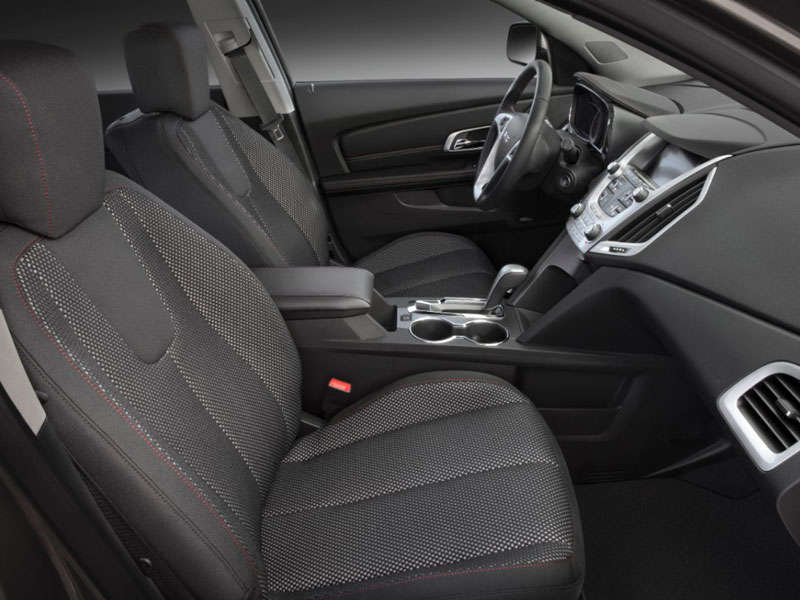
2014 GMC Terrain Crossover SUV Road Test and Review: Features and Controls
- No changes
I’m a fan of the GMC Terrain’s touchscreen radio and IntelliLink connectivity system, finding it easy to use thanks to crisp graphics, large and responsive touch-sensitive icons, and hard keys for controlling the audio system’s power, volume, tuning, and station pre-sets.
Perhaps the people who designed this set-up could be assigned the task of redesigning the rest of the Terrain’s center stack and steering wheel controls, because they’re often hard to read, to understand, and to use. Making matter worse, there isn’t enough differentiation between the closely grouped buttons, a problem that worsens after dark thanks red backlighting that makes the control panel glitter like a lava flow.
My Terrain SLT test vehicle had a standard reversing camera, making it easier to see when backing out of parking spaces. It also included a power liftgate, which took waaaaay too long to open and close. I don’t understand why a vehicle of this size needs this particular feature, but waiting for the rear cargo door to open so that I could load something into the GMC became increasingly irritating as the week wore on. I can’t imagine someone having much patience for this in an area of the country that sees lots of cold, blustery weather accompanied by rain or snow. Better, perhaps, to spend the money engineering a lighter liftgate with easy-assist gas struts for speedy opening and closing.
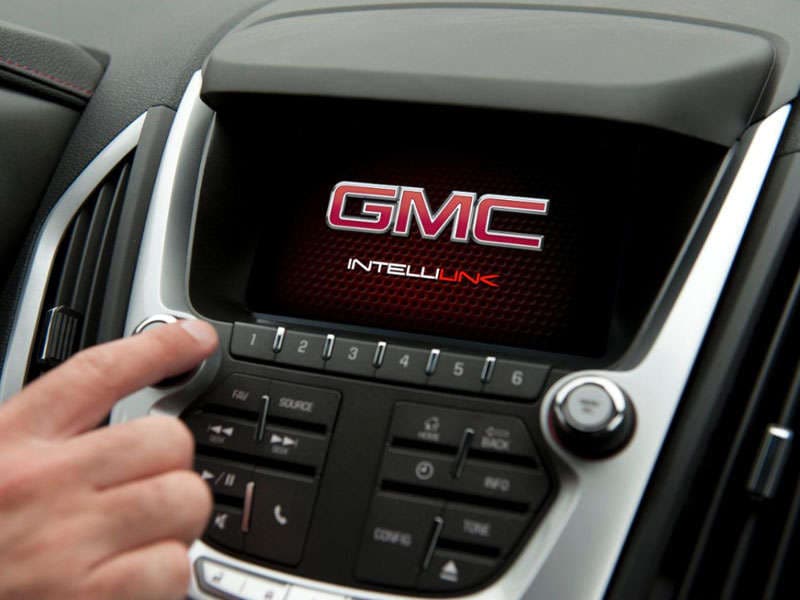
2014 GMC Terrain Crossover SUV Road Test and Review: Safety and Ratings
- No changes
Into every Terrain that rolls down the assembly line, GMC installs Bluetooth connectivity, a reversing camera, and a free six-month subscription to OnStar telematics with Automatic Crash Response service. Automatic Crash Response activates when a vehicle’s air bags deploy, putting the Terrain’s occupants in direct touch with an emergency operator who can send rescuers to the SUV’s exact location in order to speed assistance following a collision.
A Safety Package is offered as an option for the SLE and SLT models, and is included in the SLT-2 Package and for the Terrain Denali. It adds rear parking assist sensors, a Forward Collision Warning system, and a Lane Departure Warning system to the SUV.
If you’re interested in a Side Blind Zone Alert system and a Rear Cross Path Alert system, you must buy the most expensive model, the Terrain Denali. Frankly, this is disappointing, as I find these two safety features far more useful than Forward Collision Warning and Lane Departure Warning technologies. Regardless, GMC really ought to offer all four of these features as an option for the SLT model, at a minimum.
According to the National Highway Traffic Safety Administration (NHTSA), the GMC Terrain receives a 4-star overall crash-test rating. The Insurance Institute for Highway Safety (IIHS) hadn’t rated the 2014 version of the Terrain as this review was written, but last year, the virtually identical model was rated “Good” following moderate overlap frontal-impact, side-impact, roof crush strength, and rear-impact injury prevention testing. The IIHS gives the Terrain’s front crash prevention capabilities a “Basic” rating.
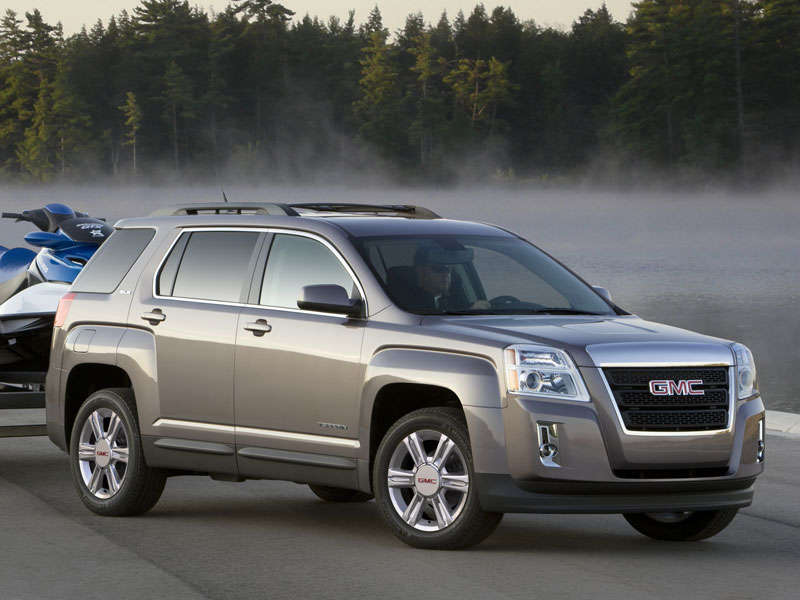
2014 GMC Terrain Crossover SUV Road Test and Review: Engines and Fuel Economy
- No changes
A 2014 GMC Terrain weighs a minimum of 3,853 pounds, which arguably makes it something more than a compact crossover in terms of overall heft. The standard 2.4-liter 4-cylinder engine generates 182 horsepower at 6,700 rpm and 172 lb.-ft. of torque at 4,900 rpm. Do the math, and it comes as no surprise to learn that the 4-cylinder engine struggles in many driving situations.
If you decide to go with the underpowered 4-cylinder engine in order to achieve EPA fuel economy ratings of 22 mpg in the city, 32 mpg on the highway, and 26 mpg in combined driving, guess again. I eked out 21.4 mpg, and while the Terrain was always loaded with my wife and kids, and twice contained a full cargo area of luggage, most of our driving was done on highways at moderate driving speeds.
This performance makes the premium for the optional 3.6-liter V-6 engine look that much more affordable. Available for any Terrain except for the base SLE model, the V-6 generates 301 horsepower at 6,500 rpm and 272 lb.-ft. of torque at 4,800 rpm, and bumps the Terrain’s maximum tow rating from 1,500 lbs. to 3,500 lbs. Fuel economy ratings drop, as might be expected, to 17 mpg in the city, 24 mpg on the highway, and 20 mpg in combined driving.
In real world driving, however, a more powerful engine installed in a heavier vehicle often hits its EPA targets with greater accuracy than a less powerful engine. That’s why I think any Terrain buyer ought to seriously consider the V-6 engine option.
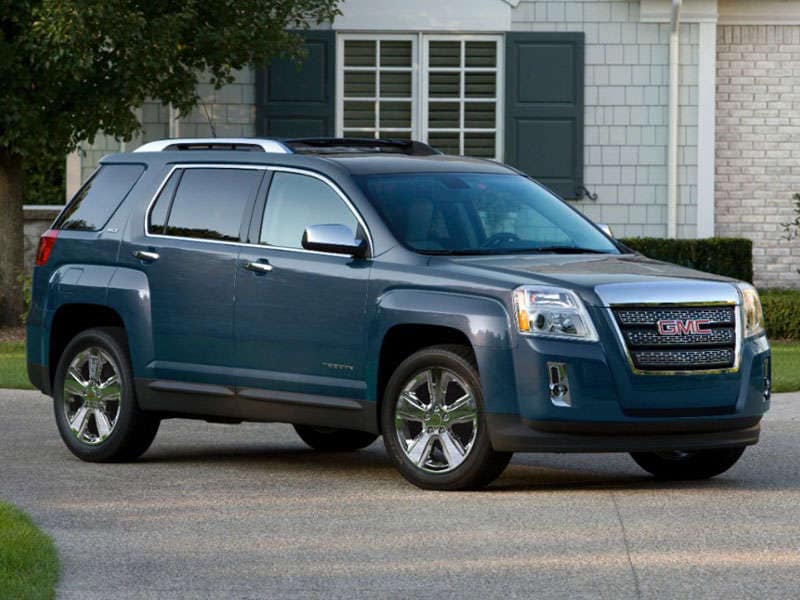
2014 GMC Terrain Crossover SUV Road Test and Review: Driving Impressions
Under normal driving conditions, the Terrain’s standard 2.4-liter 4-cylinder engine is adequate for city driving and highway cruising. Ask it to pass slower vehicles on a two-lane road, to accelerate to merge into fast-moving freeway traffic, or to climb a mountain grade, and the engine sounds both unrefined and unhappy about the task at hand.
Apart from the powertrain, the rest of the Terrain driving experience is fine, if occasionally imperfect. The brake pedal could benefit from better feel, especially just as the driver steps on it, but the brakes ultimately prove responsive and bite with authority. The electric steering is never vague even it feels too light, and the thick-rimmed steering wheel feels great in the driver’s hands. A stiff and solid structure, impressive suspension tuning, and generous 18-inch wheels and tires allow the Terrain to handle and ride equally well, feeling nimble around corners while quelling the cracks and bumps of the everyday commute. Notably, the Terrain is relatively free of wind noise at highway speeds, which may serve to amplify engine whine.
Outward visibility is challenging for the driver, the rear quarter windows proving useless for reversing out of slanted parking spaces, the rear headrests blocking significant portions of the view through the rear window, and thick windshield pillars constricting the view forward. Gratefully, a reversing camera system is standard equipment.
Overall, as long as the driver isn’t asking the Terrain for much, it is an agreeable form of transportation.
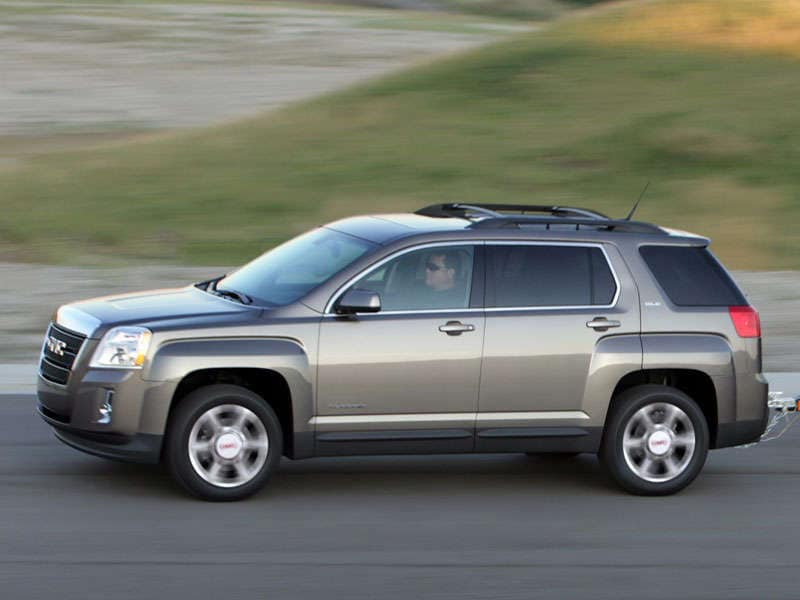
2014 GMC Terrain Crossover SUV Road Test and Review: Final Thoughts
The GMC Terrain is a study in contrasts. For every check that can go into the “Pros” column, there is one that can be placed into the “Cons” column. Many of my complaints about the Terrain can be solved with some investment, but this crossover SUV is far enough along into its current lifecycle that a General Motors budget committee would be unlikely to approve spending the money. If nothing else, slapping a turbocharger onto the standard 4-cylinder engine could go a long way toward solving one of the more obvious issues with the Terrain.
So here’s what I suggest for the next-generation Terrain. Lighten the weight, increase the 4-cylinder engine’s power, and improve the fuel economy. Enlarge the cargo area, install new controls with legible markings, and upgrade the cabin materials. At the same time, find out why so many people complain to Consumer Reports about the Terrain, and fix those problems.
In the meantime, if you like the way the GMC Terrain looks, I won’t steer you away from buying one. Remember, for every con, there is a pro. Plus, dealers are likely willing to dig deep in order to supply discounts and move Terrains off the lot. You shouldn’t be paying anywhere near sticker price for this crossover.
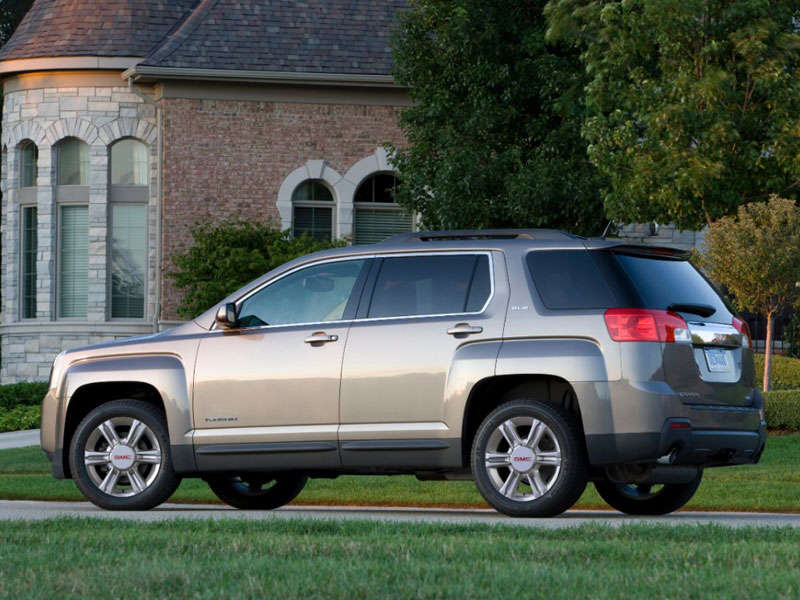
2014 GMC Terrain Crossover SUV Road Test and Review: Pros and Cons
- Styling
- Seat comfort
- Ride and handling
- Available safety features
- Favorable crash-test ratings
- Impressive warranty coverage
- Optional V-6 engine with 3,500-lb. tow capacity
- 4-cylinder engine’s power
- 4-cylinder engine’s fuel economy
- Confusing controls
- Outward visibility
- Narrow, small cargo area
- Useful safety tech limited to expensive model
- Unimpressive ratings from Consumer Reports
